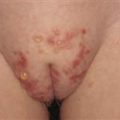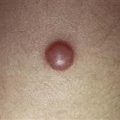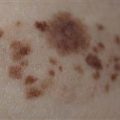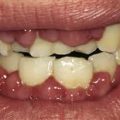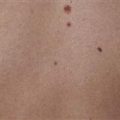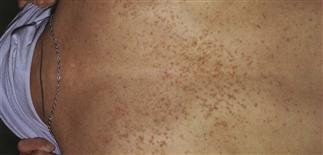
Darier’s (keratosis follicularis). Discrete brown, ‘greasy-feeling’ keratotic papules.
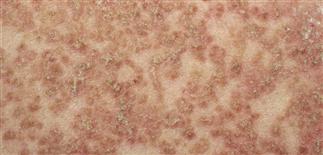
Darier’s (keratosis follicularis). Confluent keratotic papules.
CLINICAL FEATURES
Typical lesions of Darier’s disease are skin-colored to red-brown keratotic 2–5-mm papules on the face, neck, scalp, chest, back and proximal extremities. Lesions eventually coalesce to form large confluent crusted plaques. Flat-topped skin-colored papules are seen on the top of the hands, and punctuate tiny keratotic papules on the palms. Wedge-shaped nail dystrophy may occur. Severe pruritus, secondary infection with bacteria or herpes simplex virus, malodor, and heat and sun exposure aggravate the disease. Onset of disease is usually between 5 and 10 years of age and worsens with adolescence. Autosomal dominant inheritance is associated with mutations in the ATP2A2 gene that encodes SERCA2 Ca2+ ATPase.
TREATMENT
Keeping the skin cool and using topical retinoids may be helpful in mild cases. Severe cases require oral retinoid therapy. Isotretinoin 0.25–1 mg/kg/day is very effective. Isotretinoin should be used only during periods of severe exacerbations to minimize the long-term side effects. Oral antibiotics should be used for secondary bacterial infections. Intravenous or oral acyclovir is necessary to treat a widespread herpes simplex outbreak (Kaposi’s varicelliform eruption).

